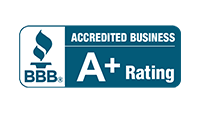
As a business owner, you likely have many goals you want to achieve, such as increasing revenue, growing your customer base, and improving customer satisfaction. But how do you measure whether you’re making progress toward these goals? That’s where Key Performance Indicators (KPIs) come in. KPIs are specific, measurable metrics that track progress toward business objectives. Regularly monitoring these best overall KPI metrics allows you to monitor your progress, identify areas for improvement, and make data-driven decisions to help your business grow.
In this blog post, we’ll explore the best overall KPI metrics you should track to measure performance across multiple areas of your organization. We’ll break these KPIs into financial, operational, customer, and employee metrics.
The Best KPI Metrics
- Revenue
- Gross Profit Margin
- Net Profit Margin
- Return on Investment
- Customer Acquisition Cost
- Inventory Turnover
- Lead Time
- Net Promoter Score
- Customer Retention Rate
- Customer Churn Rate
- Customer Satisfaction Rate
- Employee Satisfaction
- Employee Turnover Rate
- Absenteeism
- Training & Development
Financial Metrics
Revenue
Revenue is the total amount of money your business generates over a specific period. Tracking revenue is essential because it’s the lifeblood of any business. By tracking revenue, you can monitor the effectiveness of your sales and marketing efforts and identify growth opportunities.
Gross Profit Margin
Gross profit margin is the percentage of revenue after deducting the cost of goods sold (COGS). This KPI helps you understand how efficiently your business produces and sells products or services. You can identify opportunities to improve efficiencies, reduce costs, and increase profitability by tracking gross profit margin. You can find a gross profit margin calculator here.
Net Profit Margin
Net profit margin is the percentage of revenue after deducting all expenses, including COGS, operating expenses, and taxes. This KPI measures the overall profitability of your business. By tracking net profit margin, you can identify areas where you need to cut costs or increase revenue to improve profitability.
Return on Investment (ROI)
ROI measures the return on a particular investment, such as a marketing campaign or product launch. By tracking ROI, you can determine whether your investments generate a positive return or need adjustments.
Operational Metrics
Customer Acquisition Cost (CAC)
CAC is the cost to acquire a new customer, including sales and marketing expenses. By tracking CAC, you can determine the effectiveness of your customer acquisition strategies and identify areas for improvement.
Customer Lifetime Value (CLTV)
CLTV is the total revenue a customer will generate over their lifetime with your business. By tracking CLTV, you can identify your most valuable customers and tailor your marketing and retention strategies accordingly.
Inventory Turnover
Inventory turnover measures how quickly you sell and replace inventory. By tracking inventory turnover, you can ensure you’re not holding onto excess inventory, which ties up capital and increases storage costs.
Lead Time
Lead time measures the time it takes to fulfill a customer’s order. By tracking lead time, you can identify areas where you can improve your production and fulfillment processes, which can improve customer satisfaction.
Customer Metrics
Net Promoter Score (NPS)
NPS measures customer satisfaction and loyalty by asking customers how likely they are to recommend your business to others. You can identify areas to improve the customer experience and increase loyalty by tracking NPS.
Customer Retention Rate
Customer retention rate measures the percentage of customers who continue to do business with your company over a specific period. You can identify areas to improve customer satisfaction and loyalty by tracking the customer retention rate.
Customer Churn Rate
Customer churn rate measures the percentage of customers who stop doing business with your company over a specific period. You can identify areas to improve the customer experience and reduce customer turnover by tracking the churn rate.
Customer Satisfaction (CSAT)
CSAT measures how satisfied customers are with your product or service. By tracking CSAT, you can identify areas where you need to improve.
Employee Metrics
Employee Satisfaction
Employee satisfaction measures how happy and engaged your employees are. By tracking employee satisfaction, you can identify areas where you need to improve the workplace culture, compensation, benefits, or management practices to retain top talent.
Employee Turnover Rate
Employee turnover rate measures the percentage of employees who leave your company over a specific period. By tracking employee turnover, you can identify areas where you need to improve employee retention and reduce the costs associated with hiring and training new employees.
Absenteeism
Absenteeism measures how frequently employees are absent from work due to illness or other reasons. You can identify patterns or trends by tracking absenteeism and addressing the root causes, such as poor workplace morale or management practices.
Training and Development
Training and development measure how much time and resources you invest in employee training and development. By tracking this KPI, you can ensure your employees have the skills and knowledge to perform their jobs effectively and remain engaged and motivated.
Let Us Help Track the Best KPI Metrics for Your Business
Tracking the best overall KPI metrics is essential for any business looking to achieve its goals and grow over time. By measuring performance across multiple areas of your organization, you can identify areas for improvement and make data-driven decisions to improve efficiency, profitability, customer satisfaction, and employee engagement.
As a full-service digital marketing agency, we can help you track these metrics. We promote our clients’ growth by aligning KPIs with tangible business goals. Our reports are customized to highlight the real impact and provide insights for future decision-making. Our priority is to showcase genuine progress rather than masking it with excessive data for aesthetic purposes. Reach out today to see how we can help drive your business forward.





